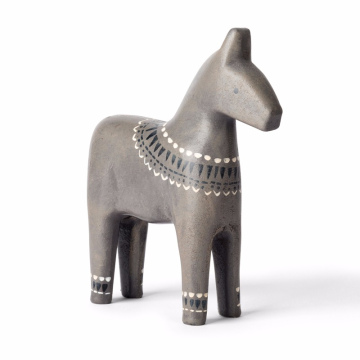Exploring the Rich Tea Culture in Spain
The introduction of tea to Spain can be traced back to the long-standing trade routes established during the 16th century when the beverage was brought over from Asia. Initially embraced by the Spanish aristocracy, tea gradually permeated the broader society, leading to its widespread adoption in coastal towns. These locales, with their extensive maritime connections, became essential nodes in the tea trade, facilitating the introduction of various blends and preparation styles.
As tea gained popularity, it began to intertwine with Spanish customs and social rituals. In many coastal towns, the tradition of afternoon tea emerged, reflecting a blend of the British influence and local flavors. This tradition typically features a variety of snacks, such as pastries and accompanying local delicacies, creating a distinctive experience that speaks to Spain's diverse culinary landscape. Moreover, local tea shops and artisan producers have emerged, showcasing unique regional blends that incorporate local ingredients, such as citrus fruits and herbs, distinguishing them from the more conventional varieties.
The evolution of tea culture in Spain has been significantly influenced by its historical encounters with other nations. For instance, the Moroccan influence can be seen in the preparation of mint tea, which, although not traditionally Spanish, has found a dedicated audience in coastal areas. Similarly, the infusion of flavors from Latin America has led to the development of unique teas that reflect the continent's rich agricultural offerings. Coastal towns often exhibit a blend of these influences, resulting in a vibrant tea scene that celebrates both tradition and innovation.
Today, tea serves as a social lubricant in these coastal communities, where it is common for friends and family to gather over a warm cup. The act of sharing tea has become a cherished practice, representing hospitality and connection, further solidifying its place in Spain's cultural fabric.
Best Coastal Towns to Enjoy Tea
Spain's coastal towns not only offer stunning views and rich cultural experiences but also a remarkable opportunity to savor some of the finest teas. Among these towns, each presents a unique atmosphere that enhances the overall tea experience. One of the top locations is San Sebastián, located in the Basque Country. Known for its picturesque beaches and vibrant culinary scene, San Sebastián boasts numerous tea houses that blend traditional and contemporary tea offerings. Visitors can enjoy tea while overlooking La Concha beach, creating a serene environment to appreciate its flavors.
Moving down the coast, Malaga shines as another excellent destination for tea enthusiasts. This Andalusian city is famous not only for its beaches but also for its exceptional tea establishments that focus on local blends infused with Mediterranean ingredients. The charming streets of the historic center offer beautiful spots for tea conversations, particularly in cafes that have been serving patrons for generations.
Cartagena, located in Murcia, is another coastal gem known for its nautical history and stunning harbors. Here, several quaint tea shops invite visitors to sample an array of teas, each steeped in rich flavors that mirror the town's maritime character. The tea experience in Cartagena is paired beautifully with views of the sea, creating an ambiance that enhances the enjoyment of every sip.
Lastly, Gibraltar deserves mention, where the blend of British and Spanish influences is reflected in its tea culture. This territory offers a variety of tea options ranging from classic English breakfast tea to unique blends that celebrate the local heritage. The stunning views from the Rock of Gibraltar provide a breathtaking backdrop, elevating the simplicity of enjoying a cup of tea into a memorable occasion.
Must-Try Tea Blends and Pairings
Spain's coastal towns offer an array of exquisite tea blends, each reflecting the rich cultural heritage and natural beauty of the region. Among the most celebrated are herbal blends, such as 'infusión de hierbas' (herbal infusion), which often incorporate locally sourced ingredients like citrus zests, mint, and chamomile. These refreshing flavors evoke the coastal ambiance, providing an invigorating experience that visitors and locals alike enjoy.
Traditional tea varieties also find their place within the Spanish tea culture. The black tea 'té negro' is commonly blended with spices like cinnamon and cloves, although it’s often enriched with the sweetness of honey, becoming a beloved comfort drink after a long day on the beach. The unique combinations create a sensory journey, allowing tea enthusiasts to explore different flavor profiles that characterize Spain’s coastal essence.
Food pairings play a vital role in enhancing the tea experience. For instance, a robust black tea pairs remarkably with sweet pastries such as 'tarta de Santiago,' a local almond cake, allowing the richness of the cake to complement the tea's depth. Similarly, herbal teas, particularly those that highlight mint or citrus, often accompany light seafood dishes or salads, where the refreshing notes mingle beautifully with the flavors of the meal.
Moreover, the presentation of tea in local establishments plays an integral part in the experience. Many coastal cafés pride themselves on curating not just a selection of teas but also an atmosphere that enhances preparation. Beautifully crafted teapots, delicate cups, and a scent-filled environment invite patrons to immerse themselves in the moment. This attention to detail elevates the ritual of tea-drinking, making it a memorable cultural experience in a scenic coastal setting.
Tea Etiquette and Experiences to Savor
In Spain, the art of tea drinking is steeped in a blend of tradition and modern influences, particularly in the picturesque coastal towns where vibrant cultures meet the serene backdrop of the sea. Understanding tea etiquette in this context is essential for both tourists and locals wishing to enjoy tea in a socially accepted manner. Typically, tea is served in fine china, often accompanied by small treats or pastries that complement the drink, enhancing the overall tasting experience.
When engaging in tea drinking, it is customary to wait until all guests have been served before taking your first sip. This reflects the Spanish values of hospitality and camaraderie, emphasizing that the tea experience is as much about connection as it is about flavor. In many coastal towns, it is common to find tea served alongside a selection of regional delicacies such as churros or an assortment of sweet and savory tapas, providing a unique fusion of flavors that embodies the local culinary ethos.
The rise of modern adaptations in Spanish tea culture has led to the popularity of specialized tea tastings and workshops. These events are often hosted in charming tea houses or during local festivals, inviting visitors to explore a variety of teas from around the world, alongside traditional Spanish infusions. Participants can learn about the origins of different tea flavors and the intricacies of brewing techniques, fostering a deeper appreciation for this beverage. Such experiences not only showcase the versatile nature of tea but also highlight the communal aspect of its consumption, turning a simple drink into an enriching social gathering.
By immersing oneself in both the etiquette and experiences associated with drinking tea in Spain's coastal towns, one can truly savor the unique combination of tradition and contemporary culture that makes this practice a cherished part of Spanish life.








